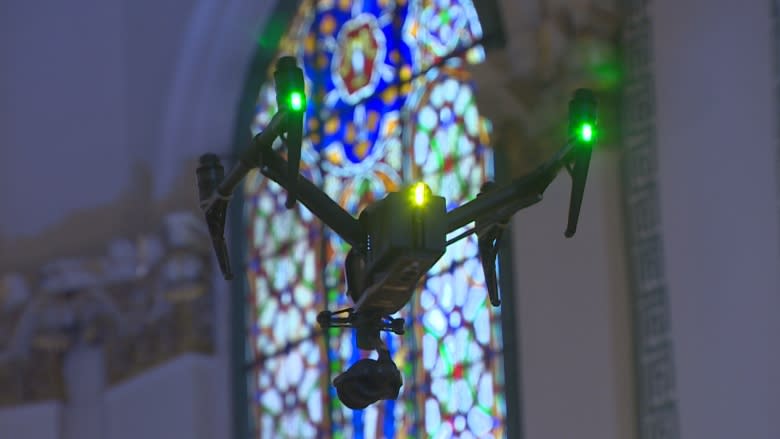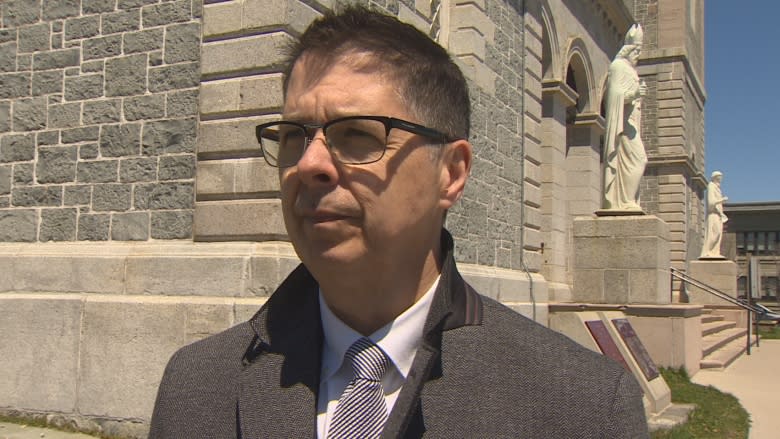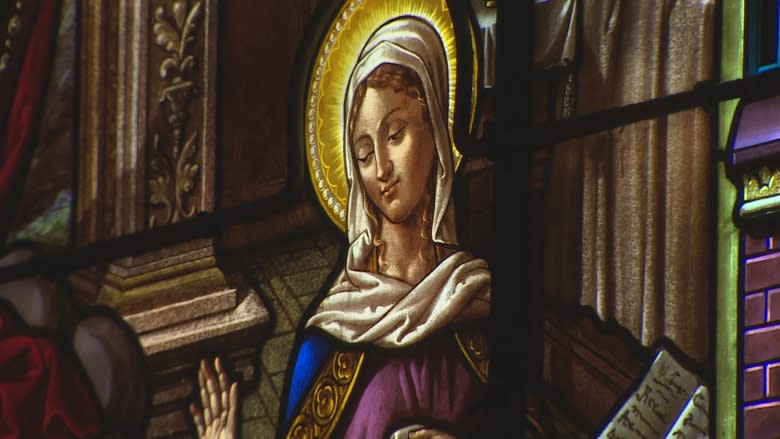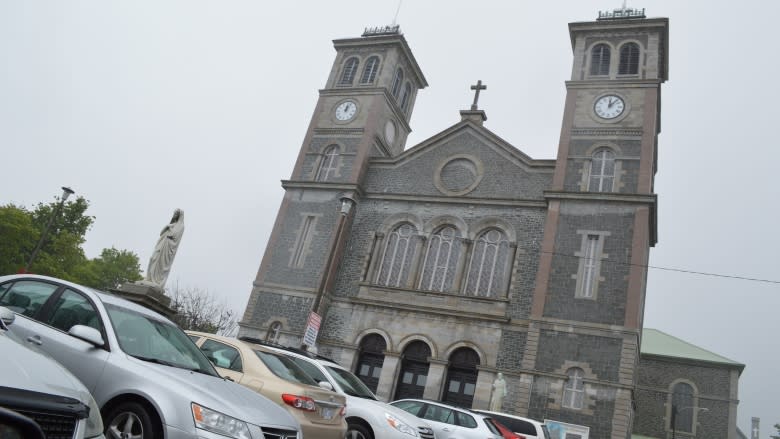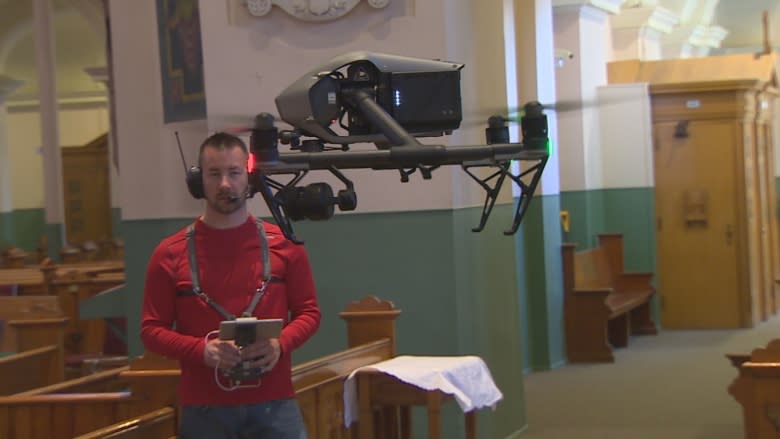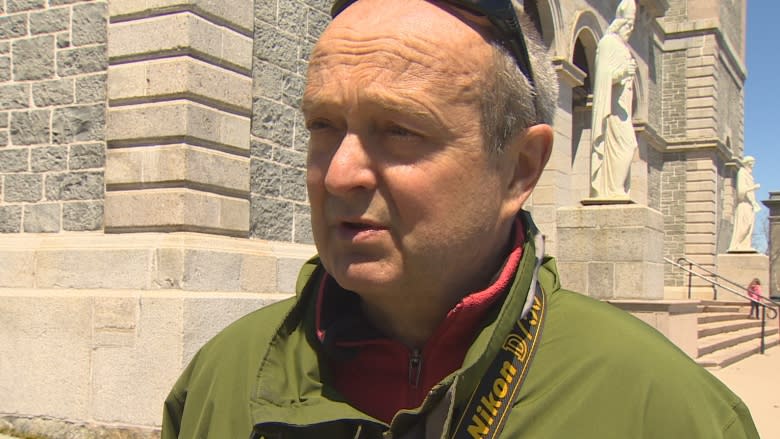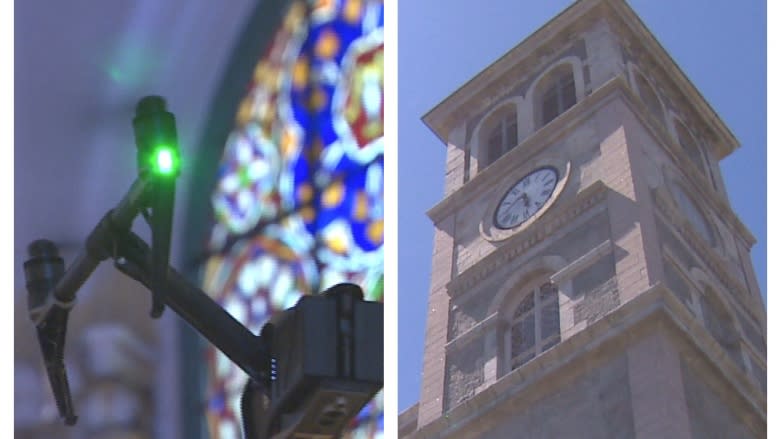Holy drones: 21st century technology creating new views of old buildings in St. John's
A drone and lasers are capturing completely new perspectives of the building that has defined the St. John's skyline for more than 160 years.
The Basilica Heritage Foundation is using 21st-century technology to map every millimetre of the 19th-century structure and its surrounding properties.
"This project is something we have been envisaging for a number of years," said Pat Thompson, the foundation's chair.
"It's trying to get both a technical perspective on the current state of the whole religious precinct as well as a archival piece. A snapshot in time of what's happening here at the basilica."
The precinct includes the Basilica of St. John the Baptist, the Sisters of Mercy Convent, the Presentation Convent, St. Bonaventure's College and the archdiocesan offices.
The new 3D laser imaging and drone photography will serve two purposes. It will create detailed drawings that architects and engineers can use to develop and maintain the buildings. It will also give the foundation images for its archives that it plans to share with the public online.
"In the future there may be projects we want to undertake. Now all of those drawings will be in place and secondly we will be able to do virtual walkthroughs of all of the interesting places that people would like to be able to see and we will be able to do those on websites," Thompson said.
He hopes it will also allow the foundation, which raises money for restoration, to keep track of changes in the structures.
"Years ago we actually had the two towers of the Basilica start to pull apart from the main body of the building, We can now measure to the millimetre what sort of impact weathering has with this snapshot in time that we are gathering," he said.
'Huge amount of data'
The basilica's massive windows are one of the features the project will document. They are showing obvious signs of deterioration but the drone and laser images are expected to detail exactly what work is needed.
"Currently that's a big challenge for us because the windows are very old. So we are using the drone and the laser scanning to be able to assess the condition of them," said Thompson.
"You can gain a huge amount of data that you wouldn't ever dream of getting if you did it with a measuring tape in the old fashioned way," said Tom Horrocks who is overseeing the project for the Basilica Heritage Foundation.
"It's a combination of photography and laser imaging that will give us a full range of uses when it's complete. To get it to this accuracy I think would be impossible with a measuring tape and hand-held photography."
The methods they have chosen mean there's no need for bucket trucks or scaffolding inside or outside of the buildings.
"What the laser imaging does is it gives accuracy to probably plus or minus three millimetres. So for instance looking at the facade of the building you can get the accuracy of the distance of mortar joints, irregular stone joints — everything that comes into view." said Horrocks.
"I think it's just a really fabulous project. It takes high-tech tools and applies them to a very historic context. It's really a leading–edge and ground–breaking exercise that we are undertaking and I expect it will really set the stage for other restoration projects to come for these buildings in the future. There is a wealth of history here that we want to protect."
The 3D imaging project is expected to take several months to complete. Horrocks said it will cost about $200,000 with money coming from the Sisters of Mercy, the Presentation Sisters congregations, Basilica Heritage Foundation donors, and the Heritage Foundation of Newfoundland and Labrador.
"The complete multi–building project will provide value and cost savings for years to come in our future undertakings," said Horrocks.

